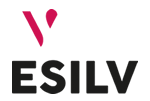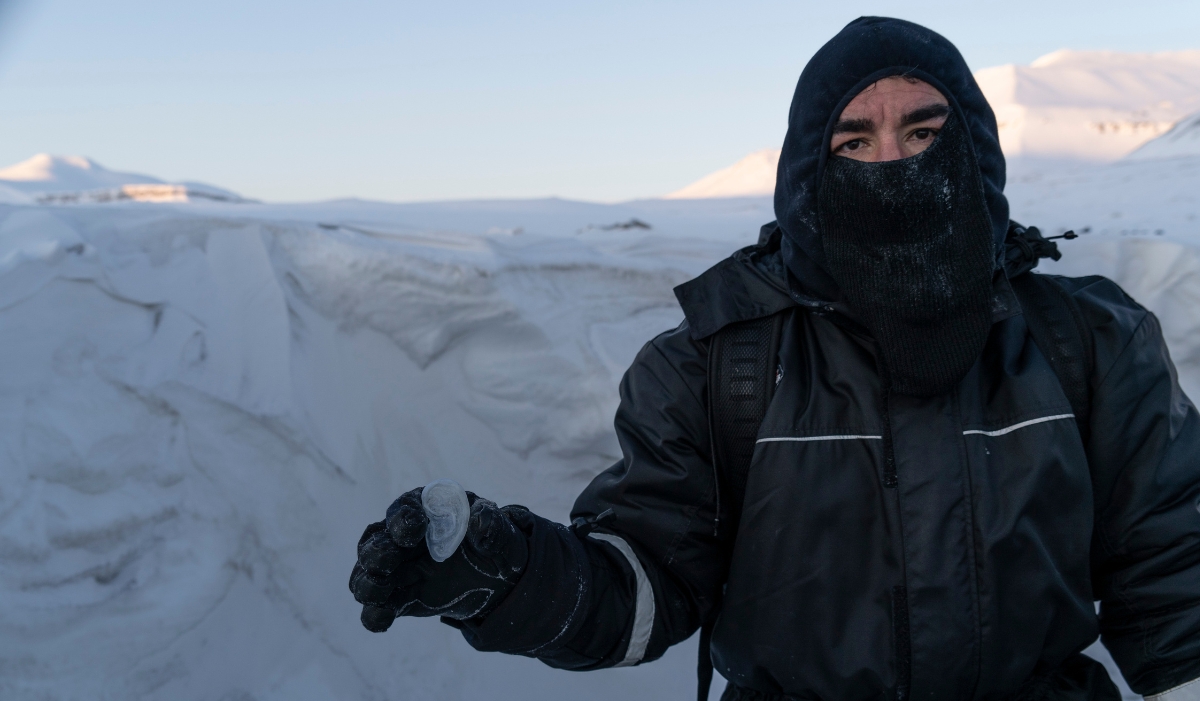Burying a sound message encoded in the DNA of a collagen ear in the heart of a glacier is the ambitious artistic project undertaken by the Spanish artist Soliman Lopez, with the support of the Institute for Future Technology at De Vinci Higher Education.
It’s over 40 degrees when Soliman Lopez, based in Valencia, appears in a tank top on the PC screen via Teams for this interview. It had been -400C a month earlier in the Arctic, where the artist had buried his high-tech work of art in a glacier: a collagen ear bearing a manifesto. It’s a striking contrast, symbolic of the climate change that prompted the project.
A committed piece of technological art
A committed conceptual artist and director of the research laboratory at ESAT (College of Art and Technology) in Valence, Soliman Lopez wanted to join the ranks of whistleblowers like Claude Lorius, one of the first scientists to scientifically prove the impact of greenhouse gases and human activities on the climate, and the founder of the IPCC.
How can we do this? By creating the Manifesto Terricola: a manifesto for the Earth and its inhabitants, for present and future generations “at a time when we no longer seem to listen to scientists, when we don’t want to look reality in the face”, explains the artist.
It is a simple text recorded in English and stored in a DNA molecule, transcribing a genetic code from a digital file. This molecule has been encapsulated in an 8 cm biodegradable collagen 3D ear.
The artist aims to raise awareness: if humankind continues on its present path, the ear will return to the surface of the Earth as the glacier melts, and the message and humanity will be lost forever.
It’s a direct arrow on the structure of traditional, contemporary art to activate a new societal responsibility written in the manifesto and change the Future of humanity,” explains Soliman Lopez.
Its intentions lie “in an intrinsic analysis of materiality, immateriality, the Anthropocene, science, digital storage and art itself, paying formal homage to those ‘Terricola’ artists from Van Gogh to Stelarc to Joe Davis, and introducing a new Ear into the History of Art.
The 8 cm biodegradable collagen 3D ear in the Arctic
At once a work of art, a text of intentions and a scientific tool, the Manifesto Terricola (Terrestrial Manifesto) also opens up the possibility of having massive hard drives of digital information stored in the DNA of glacier ecosystems with zero environmental impact.
A manifesto buried in the heart of a glacier with universal appeal
The message inside this ear was revealed when it was buried on 23 April in the permafrost of a glacier in Svalbard, an Arctic island north of Norway.
It took 12 days to find the place in the middle of the moving glaciers, a cave, into which the artist descended to reveal the manifesto’s contents and read it aloud.
This sort of cathedral added a spiritual dimension to the project, connecting it to the interior of nature. Then, the ear was buried in an even deeper hole to resonate with the human intellect and Mother Earth.
The artist also wanted to pay tribute to her mother and women who give life by aligning herself with the world.
This artistic manifesto presents an overview of humanity’s current situation in various fields, such as the economy, ethics and morality, psychology, geopolitics, the environment, and art. Written in English, the manifesto is structured around four blocks of information and 17 smaller modules, like a kind of decalogue of intentions:
- “TRANS: We are transitioning between the biological separation of human needs as a species and the biotechnological alteration of bodies.
- “FAITH: Science, thanks to its great ally, technology, is emerging victorious over faith.
- “ECO: An artist does not believe in economies created for selfish ends”.
- “HUMANS: We no longer live in the promised land, but we promise ourselves a better one”.
The artist is also referring to the Hertzian frequencies at which our brains vibrate, which used to be in phase with those of the Earth and nature:
Soliman Lopez in the Arctic
Our brain waves used to be in phase with the vibration of the Earth at 7.83 Hz, but this has no longer been the case over the last 20 years.
This is partly due to electromagnetic waves and technology. We must get back into sync. Technology, through art, can take us to another level of consciousness.
An international project supported by De Vinci Higher Education
The Institute for Future Technologies (IFT), part of De Vinci Higher Education, supported Soliman Lopez as part of a call for projects involving “human, technological and financial resources”.
The meeting with IFT Director Clément Duhart and researcher Vivien Roussel, an expert in biomaterials, was decisive in launching the materialisation of the artistic manifesto, initially a sound message to be transcribed and translated into DNA molecules. The collagen ear was created 3D and manufactured in the Fablab at De Vinci Higher Education. IFT also organised and funded the Arctic expedition as part of an art-science residency.
The collagen ear was created in 3D and manufactured in Da Vinci’s Higher Education FabLab.
This project was also supported by the University of Washington in the United States and ESAT in Valencia, with the help of computer scientist Javier Forment, who transcribed the binary code of the digital text into genetic quaternary code.
Burying the manifesto contained in this ear is not an end. Instead, it is a birth.
I leave the product of my conceptual research as a mandala created to disappear into a greater consciousness. It’s the fertilisation of an idea within an ecosystem, giving birth to a movement committed to this project and creating a community. I’m inviting the knowledge society to join me in building the “intellectosphere” to create a butterfly effect and avoid the worst.
More than 30,000 people have already joined this community. The first exhibitions have been organised in Istanbul, Turkey and Venezuela, as well as conferences. A documentary will soon be made.
The aim is to use this project as a kind of Trojan horse to get inside the structure of contemporary art, ecology and the economy”. He hopes other committed artists will join the movement to create a virtuous ecosystem.
Learn more about IFT
Learn more about studying at ESILV
This post was last modified on 29 August 2023 3:15 pm







